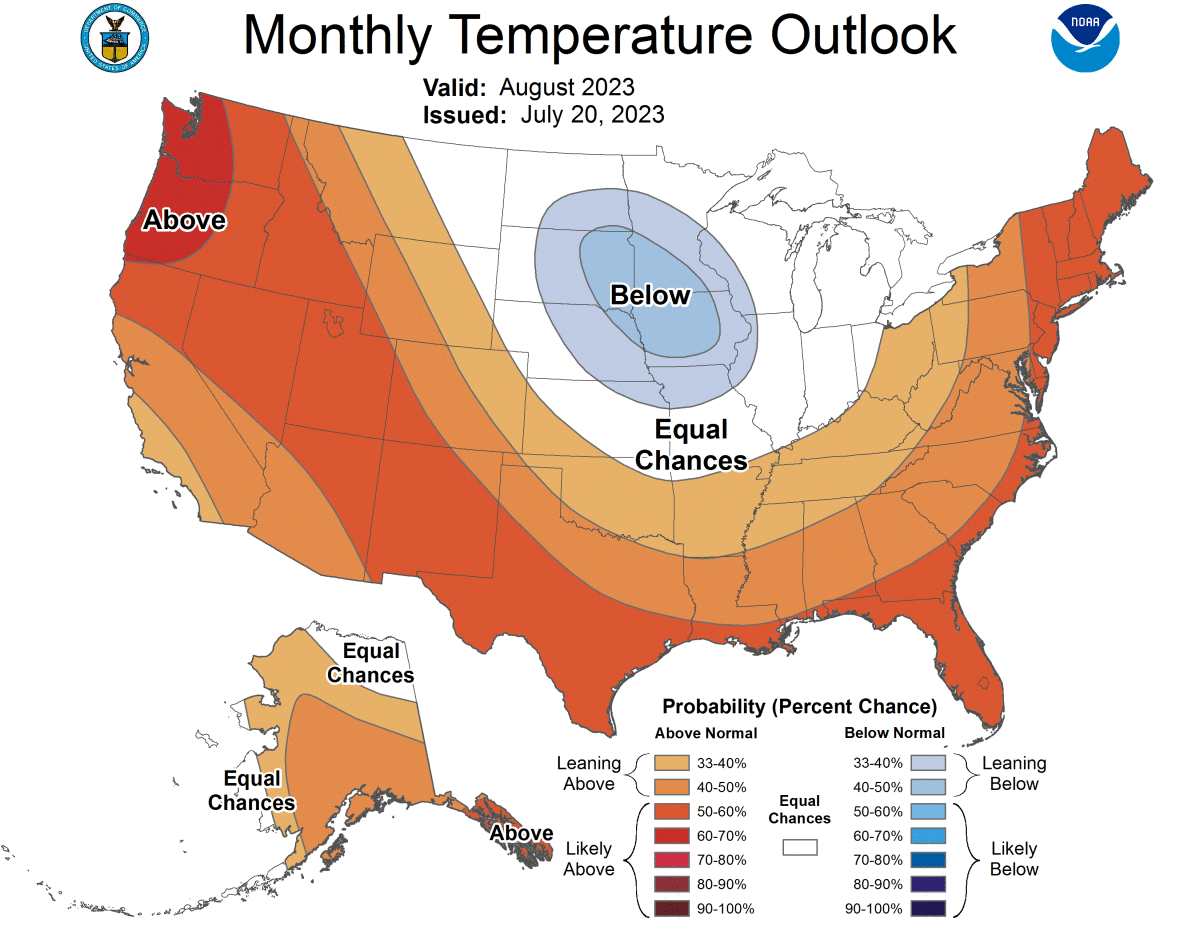July is on track to be the hottest month on record — and things are about to get warmer

- Share via
July is shaping up to be the planet’s hottest month on record as global warming, El Niño and regional heat waves conspire to push civilization into uncharted thermal territory, experts say.
As a sizzling heat dome spread misery over the American Southwest, and hospitals reported increasing numbers of heat-related illnesses, government officials told reporters this week that it was increasingly likely that July would rank as the hottest month ever recorded, and that 2023 and 2024 may end up being the hottest years ever.
“We are seeing unprecedented changes all over the world — the heat waves that we are seeing in the U.S., in Europe, in China are demolishing records left, right and center,” said Gavin Schmidt, director of NASA’s Goddard Institute for Space Studies.
Las Vegas and Phoenix have always endured broiling summers, but the scale and duration of this heat wave has brought new levels of misery.
“This last June was the warmest June on record, and we anticipate, with the understanding of what’s going on on a day-by-day basis, that July is likely to be the warmest absolute month on record.”
Schmidt said he put the odds that 2023 will be the warmest year on record at about 50-50, but noted that others have suggested it’s more like an 80% chance based on current data.
“We anticipate that 2024 will be an even warmer year because we’re going to be starting off with that El Niño event,” he said at a Thursday news conference.
El Niño, a climate pattern in the tropical Pacific associated with warmer global temperatures, is still developing, but forecasters are increasingly confident that it will be a very strong El Niño. 2016 and 2020 — currently tied for the hottest years on record — both came after El Niño events.
But while El Niño will likely boost temperatures over the next two years, the root cause of increasing global average temperature is humanity’s burning of fossil fuels.
“A lot of this is expected — it is what our models predicted would happen,” said Kristina Dahl, a principal climate scientist with the Union of Concerned Scientists. “But I think the impacts are more severe than I would have anticipated. ... Just seeing how it actually plays out, I think, is really heartbreaking.”
In the coming weeks, huge swaths of the U.S, including California, are expected to see warmer-than-average temperatures, according to the latest forecast from the National Oceanic and Atmospheric Administration.

The forecast looks particularly brutal in the Pacific Northwest, where Oregon and Washington have a 60% to 70% chance of a hotter-than-normal August. In California, there is a 33% to 60% chance of above-normal temperatures, with the odds highest in the northern part of the state.
“The southern tier of the U.S. and even into the Pacific Northwest could end up with another period of quite warm weather — quite extreme weather — during the month of August, temperature-wise,” said Matt Rosencrans, a meteorologist with NOAA’s Climate Prediction Center, during a briefing Thursday.
The forecast came after NOAA officials confirmed that last month was the hottest June in 174 years of record-keeping, with global surface temperatures 1.89 degrees Fahrenheit above average. The global ocean surface temperature also saw a record high, 1.66 degrees above average.
The NOAA says an already warming Earth steamed to its hottest June on record, smashing the old global mark by nearly a quarter of a degree.
The officials also said that this year was “virtually certain” to rank among the 10 warmest years on record, with a 97% chance of making the top 5, according to the agency.
Much of that prediction hinges on the presence of a strong El Niño.
Currently, there is a 52% chance that this El Niño will be in the “upper echelon” of strength, said Rosencrans. Should that happen during October, November and December, “it would likely be quite a warm winter over much of the Lower 48.”
Experts also noted that persistent warming from human-caused climate change is a factor in the skyrocketing temperatures. The jet stream — the fast-flowing air currents that drive weather patterns around the globe — may also be changing due to global warming, Dahl said.
While it is still an active area of research, she said there is evidence that as the climate has warmed, the traditional path of the jet stream has changed and become “wavier” due to shifting temperature gradients from north to south. That could explain why the current heat dome has lingered over the Southwest for so long.
“Basically what we’re seeing is that these weather patterns are getting stuck, and you see it both in the summer and the winter,” she said.
Death Valley, one of the most extreme places on the planet, is already seeing the impact of climate change, with summers even hotter than usual.
The convergence of factors is already making life miserable for millions of people living through the heat. In California, portions of the Central Valley could climb as high as 114 degrees this weekend.
In the Los Angeles County area, highs could reach 112 degrees in interior mountains and deserts, and 105 degrees in the coastal valleys and Santa Monica Mountains. Daily records could be broken across the Antelope Valley on Friday and through the weekend, said Mike Wofford, a meteorologist with the National Weather Service in Oxnard.
The agency has issued an excessive heat warning across the Los Angeles region until 8 p.m. Sunday. Some slight cooling is expected next week, although temperatures will still remain above normal.
“The expectation is that we’ll be cooling off, but it’s still going to be above normal for the foreseeable future,” Wofford said.
While current temperatures may seem unbearably hot, many forecasters underscored that this could well be remembered as one of the cooler years if current trends persist, including warmer overall temperatures and warmer oceans.
“We will anticipate that this is going to continue,” said Schmidt, of NASA. “And the reason why we think that it’s going to continue is because we continue to be putting greenhouse gases into the atmosphere, and until we stop doing that, temperatures will keep on rising.”
More to Read
Sign up for Essential California
The most important California stories and recommendations in your inbox every morning.
You may occasionally receive promotional content from the Los Angeles Times.














